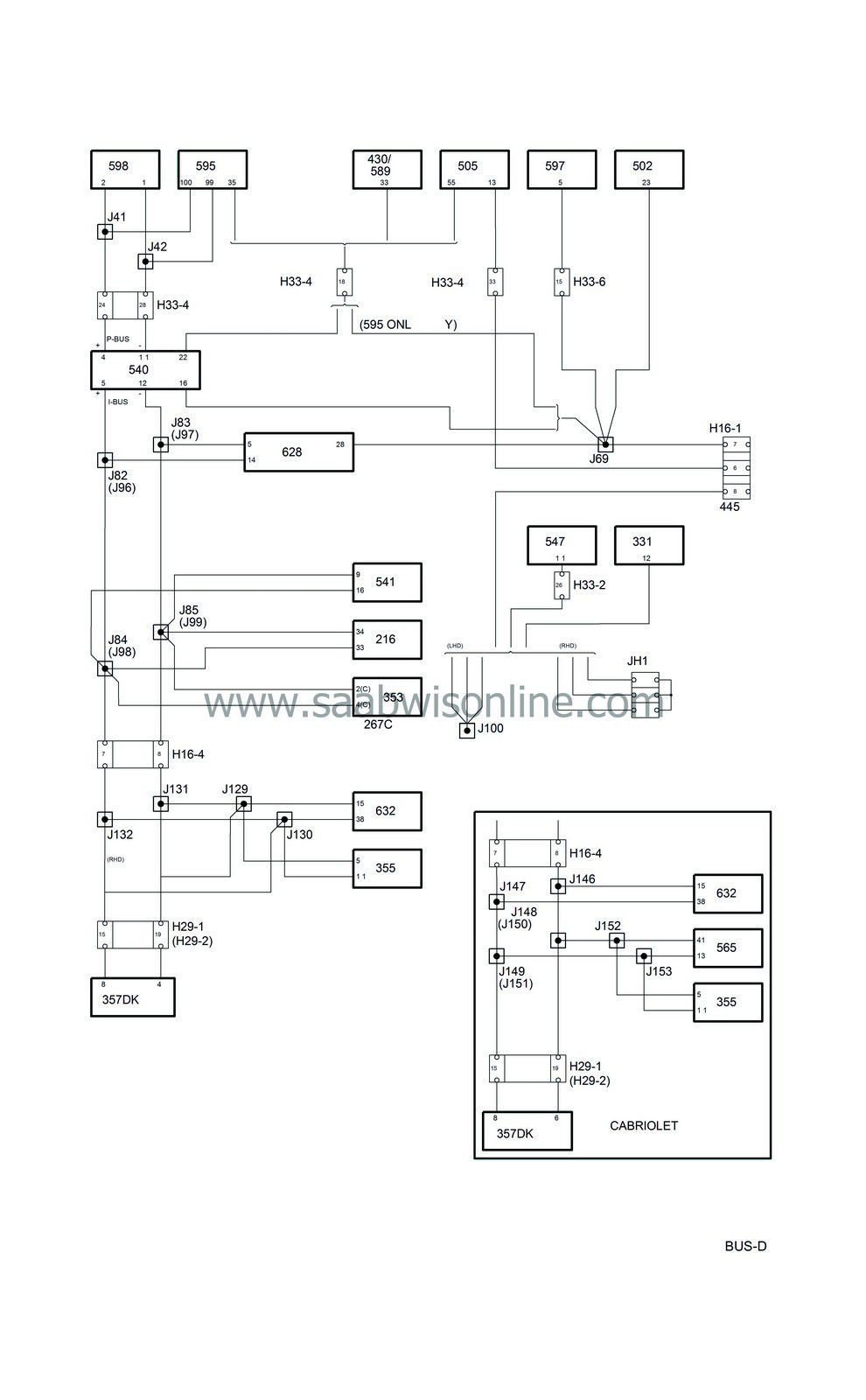Bus communication
| Bus communication |
| • |
ACC control module (216)
|
|
| • |
Radio connector C (267c)
|
|
| • |
Airbag/SRS control module (331)
|
|
| • |
Radio (353)
|
|
| • |
CD changer (355)
|
|
| • |
PSM control module (357Dk)
|
|
| • |
Trionic control module (430)
|
|
| • |
TCM control module (502)
|
|
| • |
Control module M2.10.3 (505)
|
|
| • |
MIU (540)
|
|
| • |
SID (541)
|
|
| • |
Control module (ABS) 547
|
|
| • |
STC control module (565)
|
|
| • |
Trionic OBDII control module (589)
|
|
| • |
EDC 15 control module (595)
|
|
| • |
Auxiliary heater control module (597)
|
|
| • |
Diesel pump (598)
|
|
| • |
DICE control module (628)
|
|
| • |
TWICE control module (632)
|
|
| P bus and I bus |
A bus is understood to be the leads over which information is sent digitally and serially. Digital means that the voltage difference between the leads has only two values, roughly 0 V and 5 V. The information is coded so that different combinations of 0 V and 5 V have different meanings.
Serial means that the information is sent in ”packets” which are transmitted one after the other in rapid succession.
Half of the control modules in the Saab 9-3 are connected to the bus.
The buses consist of a P bus (Powertrain Bus) and an I bus (Instrument Bus). Both buses are connected to the MIU (Main Instrument Unit). The buses are electrically isolated from each other.
The diagnostic tool is not connected directly to the bus but communicates via the DICE, one of the control modules connected to the I bus, and so has access to all control modules connected to the bus.
The data transfer rate of the P bus is ten times faster than that of the I bus. The reason for this is that the powertrain systems need information with the least possible delay.
All the information sent out from a control module is available to all other bus-connected control modules. The MIU sees to it that information which is available on one bus is also available on the other bus.
The control modules send out information on the bus at regular intervals. The time between two transmissions depends on what information is being transmitted and varies between 10 milliseconds (0.010 seconds) and 1 second. Information is also transmitted by the control module whenever the information changes.
The transfer of information between the control modules takes place on two leads, bus+ (green lead) and bus- (white lead). The two leads are twisted to reduce sensitivity to electrical interference.



